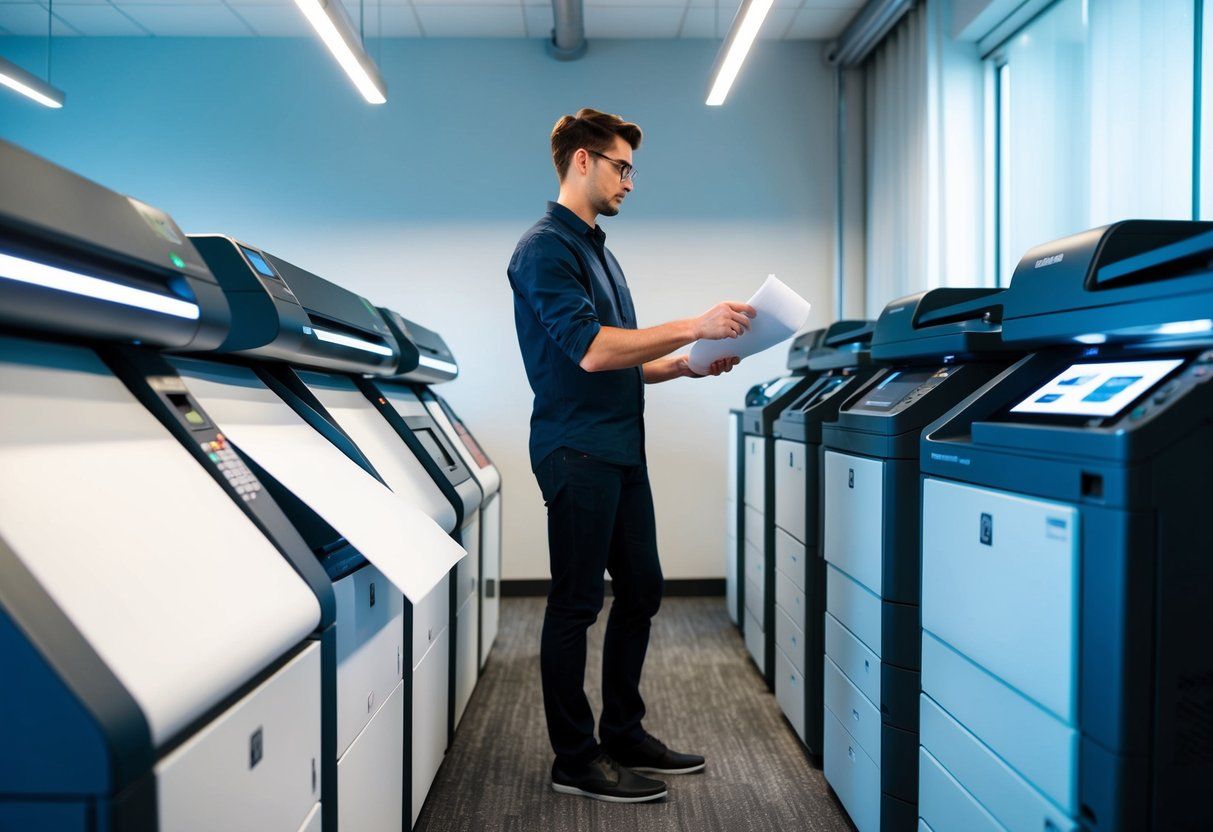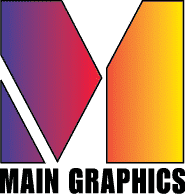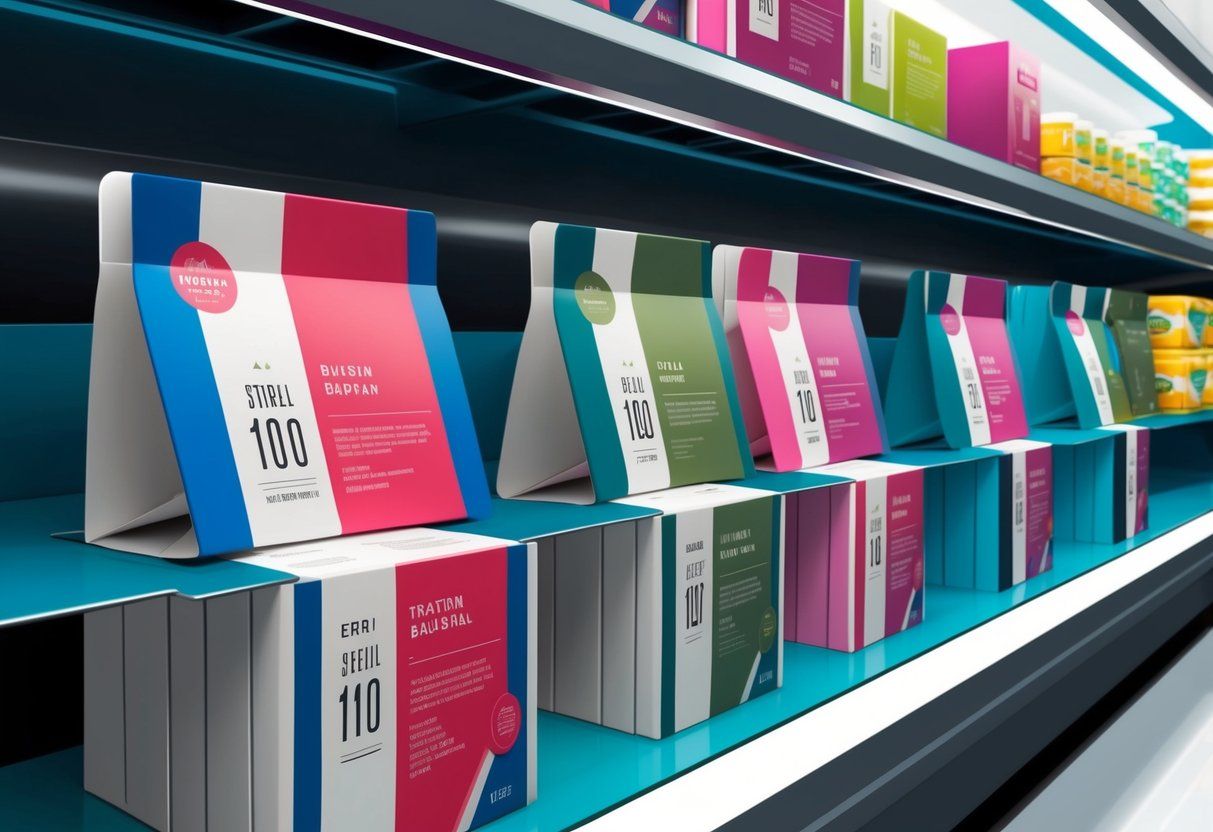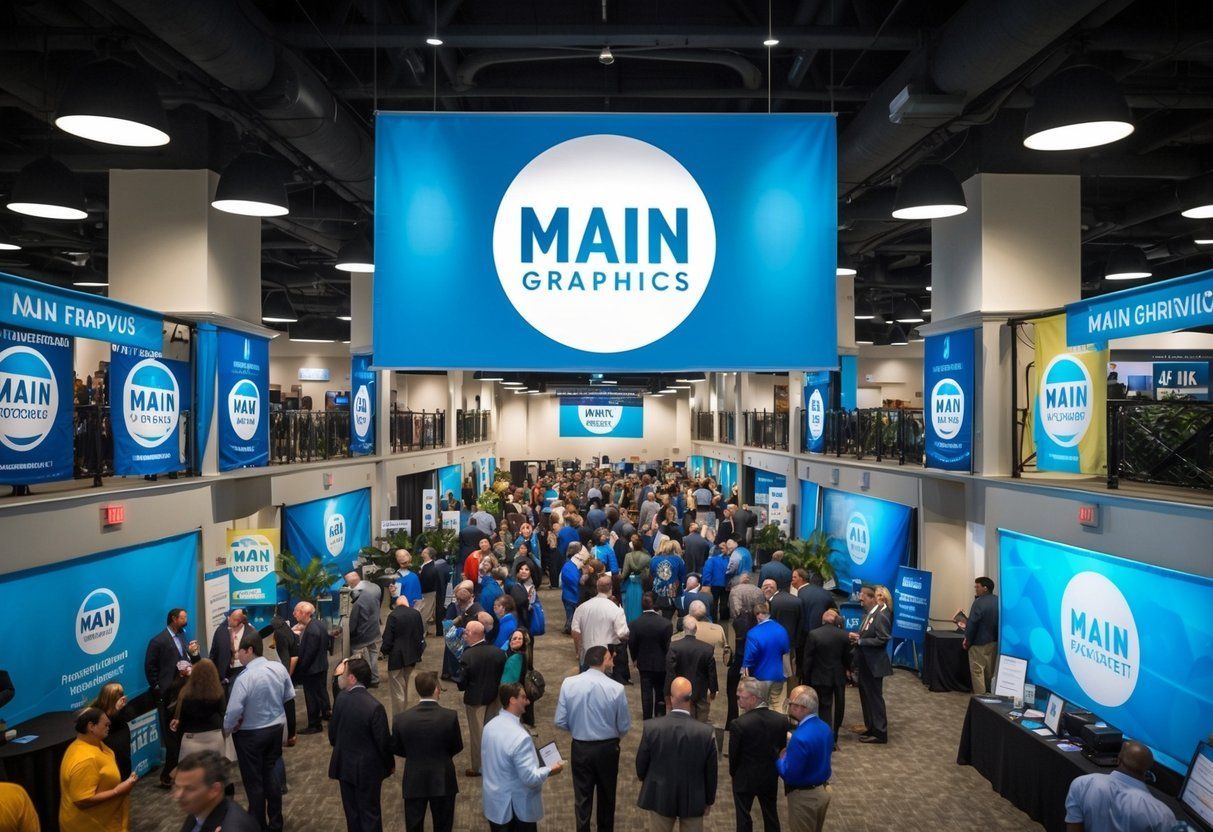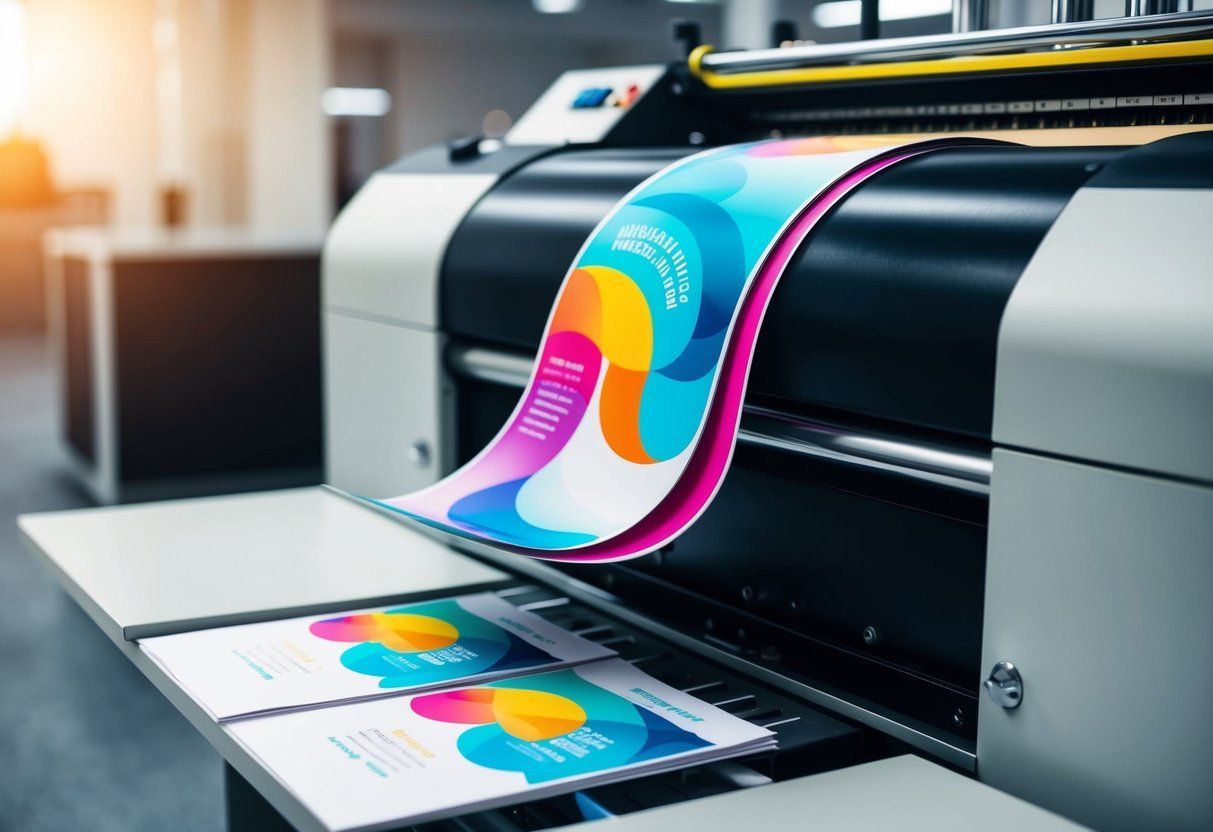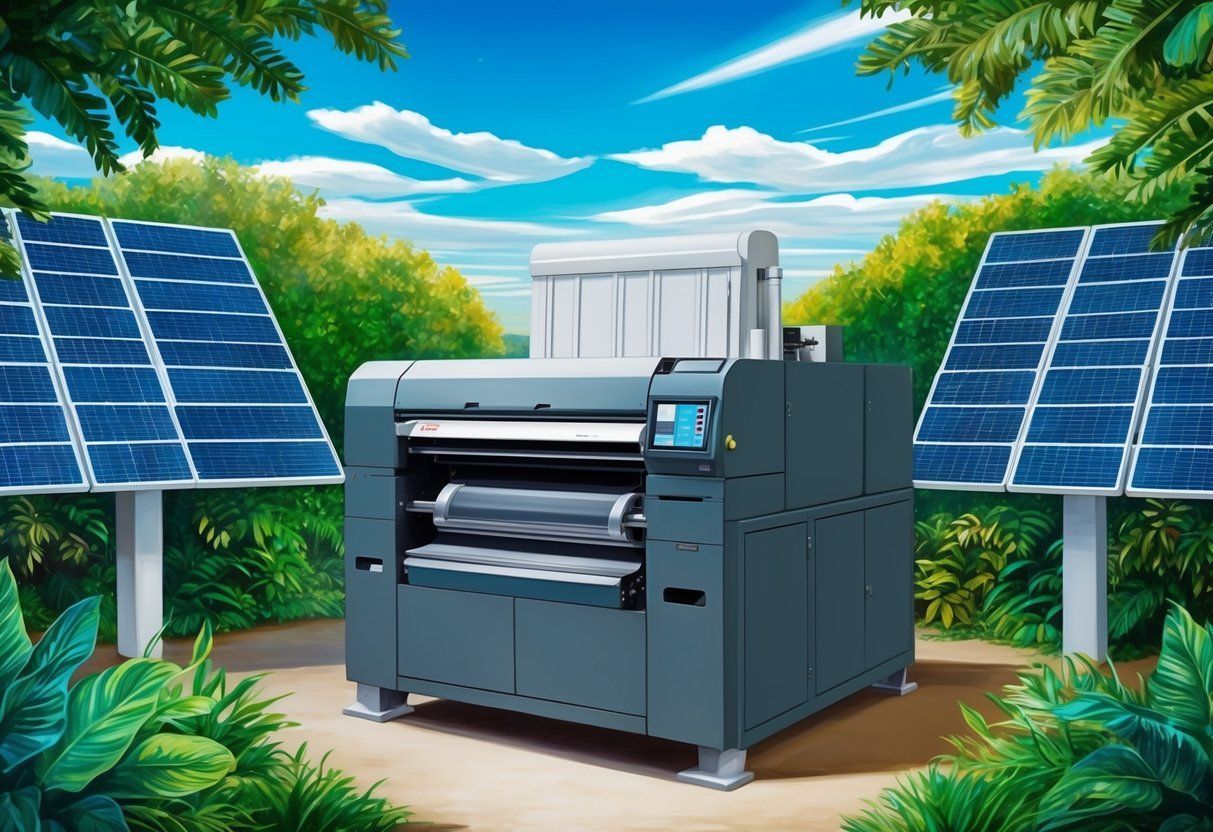How to Get More Customers with Business Cards: Effective Networking Strategies
In the digital age, the significance of business cards can sometimes be overlooked. However, these small but mighty tools are far more than just pieces of paper with contact information. They are a tangible extension of a brand’s identity and a convenient means of conveying a professional image. Business cards hold the power to make lasting impressions and can often be the first exposure a potential customer has to a business. Utilizing business cards effectively can help a company stand out in a crowded marketplace.

Perfecting the art of business card creation and distribution is a subtle yet impactful marketing strategy. An effective business card should not only include essential contact details but also reflect the company’s branding through thoughtful design choices. Even in a world where digital communications predominate, the right business card design can capture attention and facilitate networking opportunities. Moreover, when combined with strategic distribution and promotional offers, business cards can become a potent tool for customer acquisition and retention. Ensuring that business cards are distributed to the right people, at the right place and time, maximizes their potential to attract new clientele.
Key Takeaways
- Business cards are crucial for making a memorable impression and conveying professionalism.
- Thoughtful design and strategic distribution significantly enhance business card effectiveness.
- Integrating promotions and offers with business cards can boost customer engagement and retention.
Understanding the Power of Business Cards
Business cards serve as an essential tool for any business owner, effectively bridging the gap between digital networking and personal connections. These pocket-sized billboards are potent in creating brand awareness and leaving a tangible reminder of a business and its services.
Brand Recognition: A business card is more than just contact information; it’s a physical representation of a company’s brand. Design elements like logos, color schemes, and typography should align with the company’s branding to enhance recognition.
Marketing Utility: They function as a versatile marketing tool, easily handed out at networking events, conferences, or casual encounters. Each card that a business owner distributes can lead to a potential customer or a referral.
Targeted Outreach: By tailoring the design and information on the business card, owners can appeal directly to their target audience. Providing a unique selling proposition on the card can quickly inform potential clients about what sets the business apart from its competitors.
Lasting Impression: The tactile nature of business cards adds a personal touch to the exchange of information, often making interactions with potential customers more memorable. Clients are more likely to remember and reach out to a business with which they’ve had direct contact.
Consumer Engagement: A well-crafted card invites further investigation into a company and its offerings. QR codes or social media handles can direct clients to online platforms, seamlessly integrating traditional and digital marketing strategies.
In summary, despite the rise of digital media, business cards retain their impact in fostering professional relationships, conveying a business’s unique selling proposition, and targeting the right audience, making them an indispensable tool for clients and owners alike.
Designing Effective Business Cards
Crafting an effective business card is a blend of art and strategy. It’s vital to showcase a professional image while encapsulating the essence of your brand in a small, tangible format.
Elements of a Captivating Design
An impactful business card design hinges on several core elements. Color schemes and font choices are not merely aesthetic decisions; they significantly influence readability and the card’s psychological appeal. One should select colors and fonts that align with the brand’s identity and ensure that the design isn’t too cluttered, allowing for easy absorption of relevant keywords and information. The inclusion of a logo enhances brand recognition, but it should complement, not overwhelm, the card’s design.
Incorporating Contact Information and Social Media
A quality business card provides clear and concise contact information . It’s essential to include an email , phone number , and the company website . In today’s digital age, adding social media profiles using icons is a savvy move, as it directs potential contacts to interactive platforms. For technologically advanced touch-points, a QR code can be a useful addition, linking directly to digital portfolios or special online offers .
Utilizing the Reverse Side
The reverse side of a business card is an underutilized real estate that can be tailored for additional engagement. Here, one could feature a call-to-action, such as an offer , discount , or coupon code to entice new customers. Alternatively, this space is perfect for outlining a brief and compelling loyalty program , making the card not just informational, but valuable. It’s important that the reverse side maintains the same design quality to reinforce the brand’s professionalism.
Strategic Distribution of Business Cards
Efficiently allocating business cards can significantly enhance a company’s visibility and foster new customer acquisition. By targeting the relevant audience and engaging in community events, a business can create meaningful relationships and expand its client base.
Networking Events and Conferences
Networking events and conferences provide an ideal setting for professionals to exchange business cards . It’s essential to have cards readily available to hand out to prospects or potential clients . At these venues, it’s valuable to:
- Identify one’s target market: Attend events that align with the business’s services or products.
- Customize materials: Tailor business cards with specific details related to the event or services offered.
By doing so, a company ensures its display of business cards resonates with the audience present, fostering new relationships and expanding their network of clients .
Strategic Partnerships and Cross-Promotions
Creating strategic partnerships involves sharing business cards with other companies for cross-promotion. Key strategies include:
- Engage with local businesses that complement one’s services or products.
- Design a partnership program where partners can distribute each other’s cards to interested customers.
This approach allows companies to leverage the existing customer base of their partners, potentially capturing new clients who are already interested in similar products or services .
Local Community and Public Spaces
To capture the attention of the local community , businesses should consider:
- Community events: Utilize these gatherings to connect with college students or other demographic groups.
- Public bulletin boards: Place business cards on boards found in areas with high foot traffic.
By integrating business cards into various facets of the community, a company widens its reach, targeting customers in both direct and indirect ways, and aligning its services with the community’s interests and needs.
Leveraging Business Cards for Promotions and Offers

Business cards remain a powerful tool in drawing in new clientele by offering tangible, value-added incentives. Through strategic implementation, they can serve as a conduit for promotional offers and cement lasting customer relationships.
First-Time Customer Incentives
Business cards can be designed to entice new customers with exclusive offers . For instance, a business card might include a discount code that recipients can use on their first purchase. By providing an immediate financial incentive, business cards transform into a gateway for first-time customer engagement and a memorable introduction to the company’s customer service excellence.
- Example Offer on Card:
- “20% OFF on Your First Purchase! – Use Code: NEW20”
Referral and Loyalty Programs
Referral programs can be integrated into business card marketing by including a referral code that customers can share with friends and family. When a new customer presents a business card at the time of purchase, both they and the individual who referred them may receive a discount or gift card .
- Referral Program Mechanics:
- Give 10%, Get 10% – Share your referral code; when a new customer makes a purchase, both of you receive a 10% discount.
Moreover, incorporating loyalty programs onto business cards encourages repeat business. Cards can track purchases and reward repeat customers —perhaps every tenth purchase is free or results in a free gift. This not only promotes customer loyalty but also enhances the value proposition of continuing to choose your brand.
- Loyalty Punch Card Example:
- Buy 9 Coffees, Get the 10th Free! – Present this card with each purchase for a stamp.
Digital Integration and Business Cards
In an era where technology is pivotal, integrating digital elements into business cards can significantly broaden their function, transforming them from mere contact information carriers into powerful tools for marketing and customer engagement.
QR Codes and Online Information
QR codes act as gateways on business cards, allowing potential customers to access online resources with a simple scan. These resources might include:
- Websites : Directs users to a landing page where they can learn more about services and offers.
- Ecommerce Platforms : Provides a quick path to online stores, enhancing the potential for immediate purchases.
- Social Media : Connects customers to social media profiles, facilitating ongoing engagement.
- Email Marketing : QR code scans can trigger email sign-ups, seamlessly expanding an email marketing list.
The integration of a QR code on a business card can also lead the recipient to surveys or feedback forms, enabling businesses to gather valuable customer insights.
Tracking Effectiveness with Analytics Tools
Digital business cards paired with analytics tools empower businesses to track their success. By analyzing how many scans a QR code receives or the number of visits to a linked website, companies obtain concrete data on the card’s effectiveness. This data can influence marketing strategies and offer insights into customer behavior. Additionally, special campaigns or offers can be tracked to determine return on investment, allowing for tactical adjustments and a more targeted approach in future interactions.
Maximizing Customer Engagement Through Business Cards
Business cards can serve as a powerful bridge between a company’s brand and its target audience. They are more than just pieces of paper with contact information; they’re tools that can be leveraged to boost customer engagement and expand one’s client base when used with innovative tactics.
Creative Marketing Techniques
In the realm of creative marketing , business cards transform into a silent salesman. For instance, implementing exclusive offers on the cards can drive sales and cultivate a sense of urgency. “Redeem this card for 10% off your next purchase,” is an offer that can entice recipients to act promptly. The use of QR codes printed on cards enables direct access to email marketing lists or blogging content, seamlessly integrating online marketing efforts. Another effective approach is to host a contest where business cards act as entry tickets, encouraging recipients to keep and share them with peers, thereby capitalizing on social proof .
Building Community Relations
Community relation strategies often pivot on personal presence and engagement. Businesses may use their cards to foster connections during networking events or community events , ensuring their brand remains top of mind. By associating a face with the business card, they improve recall and credibility. Displaying business cards in public bulletin boards or local business directories can also improve a business’s visibility within the community. Furthermore, involvement in community service or sponsorship of events creates a strong community presence, where the humble business card becomes a symbol of the company’s commitment and gains referrals through positive customer service interactions.
Improving Visibility and Awareness
Business cards remain a potent marketing tool for increasing both visibility and brand awareness. When designed strategically, they serve as a compact representation of a brand’s identity and values. Employing a bold and memorable logo on a business card can help a company stand out amidst competition, ensuring the brand stays in the minds of potential customers.
One method of improving visibility is to place business cards in prominent locations where they are likely to be seen. For instance, integrating business cards into a window display or with products that customers purchase can capture attention effectively. This strategy not only showcases the business card but also reinforces the presence of the brand in various settings.
Distinct placement of business cards can include:
- Adjacent to the cash register
- Incorporated into product packaging
- Beside complementary items or services
Key tips for business card design for better visibility and awareness:
- Use high-contrast colors that align with the brand palette
- Include a clear, legible typeface for contact information
- Ensure the logo is prominently displayed yet not overwhelming
- Integrate social media handles to encourage online interaction
Businesses should consider distributing business cards during networking events, conferences, and community gatherings. Each exchange represents an opportunity to expand one’s professional network and increase brand awareness. Moreover, the physical tangibility of a business card adds a personal touch that digital marketing cannot replicate, making it an invaluable asset for any business’s marketing arsenal.
Handling and Presenting Business Cards with Professionalism
When professionals exchange business cards , they not only share contact information but also set the tone for their business relationship. A few key practices should guide such exchanges to ensure a positive impression on potential clients .
Before the Meeting:
- Ensure cards are clean and undamaged ; a pristine card reflects attention to detail.
- Carry cards in a business card holder to maintain their condition.
During the Exchange:
- Stand up if seated as a show of respect when handing out a business card.
- Offer the business card with the text facing the recipient so it’s immediately readable.
- Use both hands if culturally appropriate, which is seen as a sign of respect in some countries.
Presenting the Card:
- Greet the client and wait for a pause in the conversation.
- Politely request to exchange cards: “May I offer you my business card?”
- Present your card smoothly without any hurried or abrupt movements.
After Receiving a Card:
- Take a moment to look at the card, acknowledging the content; it demonstrates that you value the connection.
- Make a comment or ask a pertinent question about the information on the card to show interest.
Follow-Up:
- Store the received cards respectfully; placing them immediately into a wallet or cardholder can signify their importance to you.
- Consider jotting down notes on the back of the card after the meeting to remember key points from the conversation.
By handling and presenting business cards with professionalism , one establishes a foundation for a respectful and potentially fruitful business relationship.
Enhancing Follow-Up Strategies
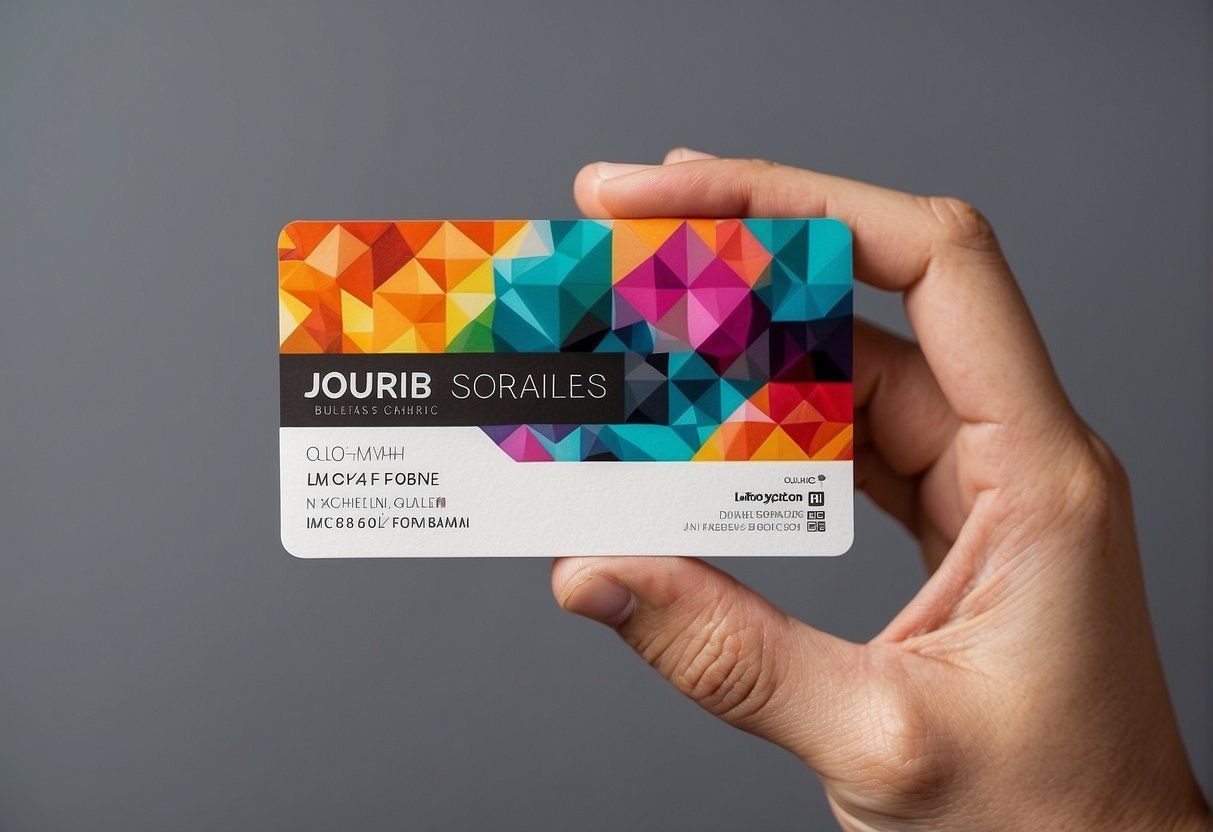
Effective follow-up strategies are essential for converting business card contacts into loyal customers. Here are a few methods to enhance follow-ups:
Immediate Action
Following the initial meeting, individuals should promptly search for the person’s name on platforms like LinkedIn to refresh connections. A swift email thanking them for their interaction places one’s business at the forefront of potential clients’ minds.
Regular Communication
Maintaining regular communication via email marketing is key. It shows customers that the business values their patronage and encourages repeat business . Communicating should not be limited to promotions; including valuable content relevant to the customer’s interests can enhance engagement.
Networking Touch Points
A structured approach to networking can drive business growth. Establish a series of touchpoints: a thank-you note post-interaction, a check-in call two weeks later, and perhaps a catch-up invite a month later are great ways to keep the relationship active without being intrusive. LinkedIn advises planning these interactions strategically after a purchase or interaction.
Personalization
One should personalize their follow-up communications. Invoking details from the initial meeting or referencing a recent company update personalizes follow-ups, making them more effective.
Timely Reminders
Setting up a system of timely reminders for follow-up ensures that no contact is forgotten. Customer relationship management tools can be extremely helpful in this regard. By scheduling follow-ups, businesses can maintain a consistent presence in their customers’ inboxes, keeping the conversation going and the relationship warm.
Implementing these strategies can significantly enhance the potential of business cards in attracting and maintaining a devoted clientele.
Evaluating and Updating Business Card Strategies
The continuous refinement of business card strategies is essential to remain competitive and effective in attracting new customers. This involves two critical steps: actively seeking feedback and staying aligned with the latest trends and competitive moves in the market.
Soliciting and Implementing Feedback
Business card printing and design services should routinely solicit feedback from clients to gauge the effectiveness of their products. Generating a feedback loop can be as simple as conducting a survey after a transaction or engaging with clients directly to ask how the business card impacted their networking. Companies need to consider this feedback seriously to make data-driven changes, ensuring they offer a quality business card that meets market demands.
- Customer Surveys: Collect customer opinions through electronic surveys or comment cards.
- Client Interviews: Conduct brief interviews or informal conversations to gather in-depth insights.
- Review Analysis : Examine online reviews for spontaneous client feedback.
Keeping Up with Trends and Competition
To sustain relevance, companies must remain cognizant of current design trends and competitor tactics. This involves conducting market research to understand what designs are resonating and which service offerings are in vogue. An organization should regularly review competitors’ business cards for inspiration or to identify gaps in their own strategy, ensuring they are not left behind as the market evolves.
- Trend Analysis: Monitor design publications and industry forums.
- Competitor Benchmarking: Examine competitors’ cards and service features.
- Service Adaptation: Implement new technologies or services that address emerging needs.
By thoroughly examining customer feedback and staying abreast of design innovations and competitor offerings, a business can assure that its business cards serve as an effective tool for customer acquisition and retention.
Frequently Asked Questions
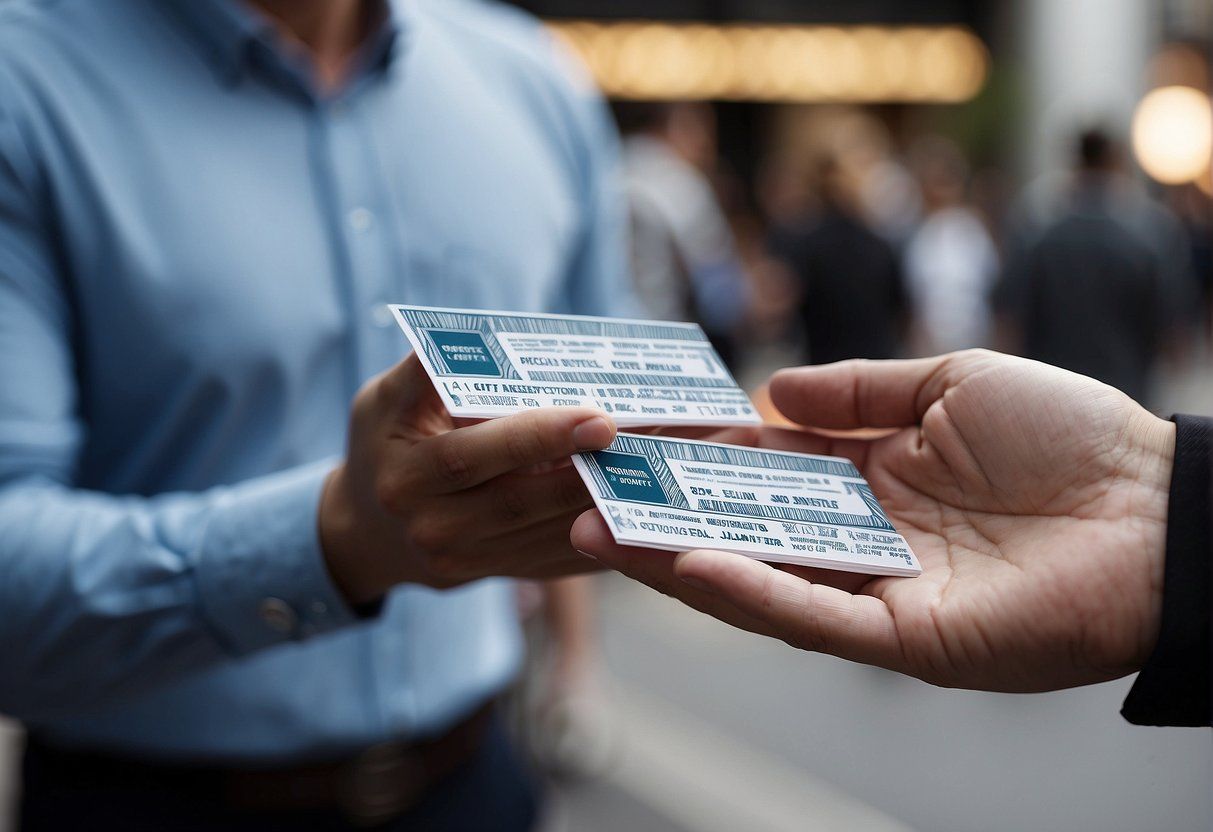
Business cards remain a tangible and personalized tool for making business connections. In this section, we explore common inquiries regarding their use and distribution to expand a customer base.
What are some creative strategies for distributing business cards to increase customer base?
One can engage in networking events and local meetups pertinent to their industry, using the opportunity to exchange business cards. Inserting business cards in packaging or along with invoices when providing products or services offers another touchpoint with customers.
Can digital business cards be an effective tool in gaining more customers, and how?
Digital business cards can broaden one’s reach since they can be shared online and via email, tapping into a larger audience. They also provide convenience by enabling quick and easy exchange of contact details with a simple link or QR code.
What are the legal considerations when leaving business cards in public places?
Businesses must comply with local regulations regarding solicitation and littering. This means securing permission from property owners before leaving business cards on premises and being mindful not to contravene local advertising statutes.
What techniques can be used to ensure your business cards stand out from the competition?
Using high-quality materials, unique designs, and clear branding can differentiate one’s business cards. Additionally, incorporating a call-to-action or an offer can make them more compelling and memorable.
How can one effectively integrate business cards into broader marketing efforts?
Business cards should mirror a company’s branding and messaging, ensuring consistency with other marketing materials. They can also carry tracking mechanisms, such as QR codes or unique URLs, to measure their effectiveness as part of a wider strategy.
What are the best practices for handing out business cards to individuals you’ve never met before?
When offering business cards to new acquaintances, it’s best to first create a dialogue and establish a connection. Then, provide a business card as a means to continue the conversation, ensuring the exchange feels natural and not forced.…
